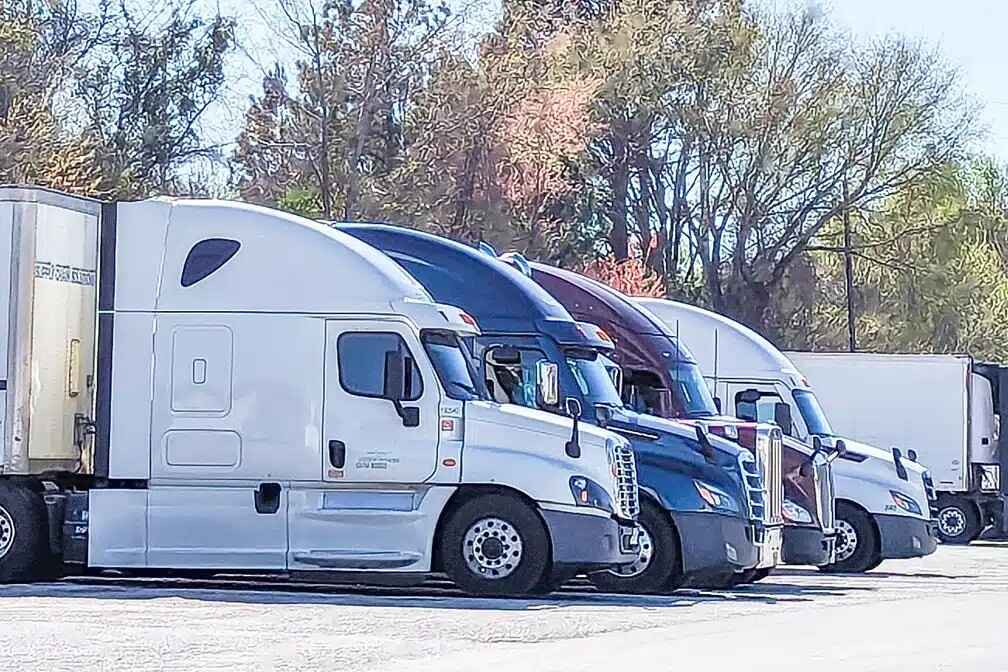July 27, 2024 6:18 am
BRINGING THE AMERICAN TRUCK DRIVER THE LATEST TRUCK DRIVER NEWS
The Clean Truck Program:
Balancing Progress and Sustainability
The Clean Truck Program has become a key initiative in reducing the environmental impact of the trucking industry and aims to promote greener practices.

The Clean Truck Program: A Look Back at the 2013 Supreme Court Decision
The Clean Truck Program (CTP) has become a key initiative in reducing the environmental impact of the trucking industry. With challenges like climate change, dwindling resources, and urban pollution, the CTP aims to promote greener practices in freight transportation. The importance of the CTP was highlighted by a landmark U.S. Supreme Court decision in 2013 in American Trucking Associations, Inc. v. City of Los Angeles. This ruling clarified the relationship between federal and local regulations and emphasized the growing role of environmental issues in transportation.
What is the Clean Truck Program?
The Clean Truck Program shows how policymakers, regulators, and industry players are tackling the challenges posed by the trucking sector. While trucks are essential for trade, they also significantly contribute to air pollution, greenhouse gas emissions, and noise pollution. The CTP aims to balance economic growth with environmental protection by setting strict emission standards, promoting cleaner fuels, and encouraging advancements in truck design and operation.
The CTP focuses on promoting hybrid vehicles, upgrading trucks with advanced emission-reducing technologies, and encouraging sustainable practices. By setting emission reduction goals, providing incentives for eco-friendly solutions, and fostering collaboration among academia, industry, and government, the program aims to create a more sustainable transportation industry.
The 2013 Supreme Court Ruling
In 2013, the Supreme Court made a significant ruling in the case of American Trucking Associations, Inc. v. City of Los Angeles. This decision highlighted the conflict between local environmental regulations and federal law.
The legal dispute involved the American Trucking Association (ATA) and the City of Los Angeles. The city had set rules for trucks operating at the Port of Los Angeles, including designated parking areas and updated emission standards. However, the ATA argued that these local regulations were overridden by the Federal Aviation Administration Authorization Act (FAAAA).
The Supreme Court ruled that the city’s regulations were indeed preempted by federal law under the FAAAA. This decision emphasized the importance of consistency in regulatory frameworks to prevent local rules from contradicting federal objectives.
Moving Forward and Implications
The impact of the 2013 Supreme Court ruling has been significant. It highlighted the legal environment governing environmental regulations in transportation industries. The ruling stressed the importance of maintaining a balance between local and federal efforts, promoting an effective and comprehensive approach to environmental conservation.
Since the ruling, the Clean Truck Program has refined its processes. The decision spurred collaboration among federal agencies, local authorities, and industry players, highlighting the need to align diverse interests for sustainable practices in the trucking sector. This alignment is vital for ensuring that the freight transportation industry continues to grow while mitigating its environmental impact.
With advancing technology and growing concerns about climate change, the Clean Truck Program serves as a guiding light for the transportation sector. It promotes innovation and responsible behavior, encouraging cooperation among researchers, manufacturers, policymakers, and trucking companies to find solutions that reduce emissions, improve fuel efficiency, and create a sustainable operational environment.
Looking Ahead
The Clean Truck Program symbolizes the evolution of regulatory frameworks in response to environmental issues. It stands as a force shaping the course of an industry at the crossroads of economic prosperity and environmental protection. The 2013 Supreme Court decision marked a pivotal moment, highlighting the need for a balanced regulatory framework that considers both federal and local regulations.
Moving toward a more sustainable transportation sector requires collaboration among policymakers, industry stakeholders, and environmental advocates. The Clean Truck Program showcases a blend of technological progress and a shared dedication to safeguarding our planet for future generations. As the program develops and refines its approaches, it reflects the ongoing effort to find harmony between progress and environmental stewardship.
Recent Posts
Copyright 2024. All Rights Reserved.
